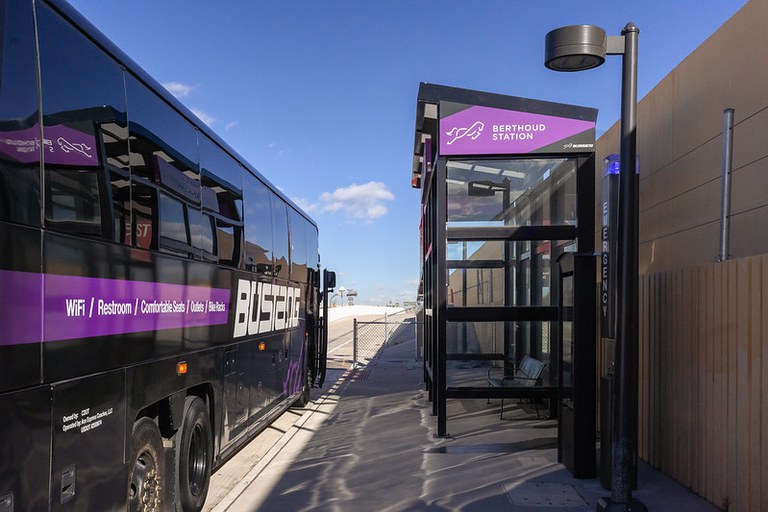First Last Mile Toolkit

First Last Mile Support
Improving first and last mile (FLM) infrastructure in the walksheds around future BRT stations is key to improving multimodal safety, community accessibility, and maximizing ridership. The CDOT Office of Innovative Mobility’s (OIM) BRT First/Last Mile Toolkit aims to equip BRT project stakeholders with tools to evaluate FLM needs in the walksheds around planned BRT station areas.
Using the Federal Boulevard BRT project as a pilot, OIM developed and refined a Station Area Walkshed Index tool and a Walkshed Site Visit tool. These tools, which are currently available for stakeholder use, are detailed below.
Available Tools & Resources

Station Area Walkshed Index
Key Benefits of the Walkshed Index: Quantitatively scores and prioritizes BRT station area walksheds that have the most need for multimodal transportation and safety improvements. This analysis identifies sites to visit for additional analysis and informs potential multimodal investment priorities.
Walkshed Index Tool Overview: OIM’s Walkshed Index is based on the proven methodology of DRCOG’s Equity Index. Walkshed Index scores are calculated for each station area along a BRT corridor, and walksheds are ranked to identify those that could benefit most from multimodal infrastructure and safety improvements. Index scores are based on a range of datasets, including block group level 5-Year ACS demographic data, crash data, current transit ridership data, and modeled future transit ridership data. Additional spatial datasets can also be incorporated into the Index. The half-mile walksheds and Index scores are developed through an automated ArcGIS model that is available for use by local municipalities.
This tool is ready for use by BRT project stakeholders. CDOT OIM can provide:
- An automated ArcGIS tool that develops a Walkshed Index for all BRT station areas (available late Q3 2025).
- A semi-automated version of the tool is currently available for use.
- Walkshed Index Tool User Guide.
- Technical support for all Index Tool users.
Walkshed Site Visit Analysis Tool
Key Benefits of the Walkshed Site Visit Tool: OIM developed a smart phone-based survey tool that allows users to conduct walkshed site visits where they can easily identify, document, and map potential FLM improvements. The mobile tool is based on pre-populated survey fields that help users identify FLM issues and potential recommendations in a simple and efficient manner. No prior familiarity with the Site Visit Tool is required, which means it can be easily used by a variety of project stakeholders and/or community members. The Site Visit Tool can be used as the next step after using the Walkshed Index or independently.
Walkshed Site Visit Tool Overview: The Site Visit Tool provides a qualitative, hands on approach to identifying necessary multimodal improvements in a walkshed. This tool enables project stakeholders to visit station area walksheds and catalog current multimodal infrastructure needs or challenges and potential recommendations to improve these issues. The tool can be easily used on a mobile phone during a site visit to identify the location of an issue and add details about the issue, including written information and pictures.
Site visit results are available in an ArcGIS Online map and can also be exported as an Excel spreadsheet. The walkshed analysis shown below was completed by a mix of CDOT staff, CU-Denver students (who were not previously familiar with the tool), and project team consultants. Over 100 data points were gathered within 2 hours for a half-mile walkshed along Federal Boulevard.
This tool is ready for use by BRT project stakeholders. CDOT OIM can provide:
- Site Visit Tool with customizable fields that can be tailored to specific projects and local FLM needs.
- Webmap and spreadsheet outputs developed after using the Site Visit Tool
- Site Visit Tool User Guide
- Technical support for all Site Visit Tool users.
Additional Help
The tools are useful for identifying priorities for FLM investment, and identifying FLM issues in the field. If you are interested in recreating these tools, see the memos and PowerPoint in the resource section. Additional help is available through our office, Contact us.
